Poison comes in small packages, they say. Besides being colorful and adorable beyond reason, the ladybug sure is small, but is it poisonous?
No ladybugs aren’t poisonous. Ladybugs do release an alkaloid-rich fluid (Coccinellidae) known asreflex blood from their leg joints. The foul-smelling yellow fluid is designed to deter predators like lizards and birds. Orange Asian ladybugs are the most toxic and pose the highest risk to people with allergies.
We’ll take a look at different types of ladybugs, their toxicity to humans and animals, as well as why they possess these qualities. So, stick around to learn more.
Ladybugs Poisonous Chemical Defence
Ladybugs, being small and vulnerable to predators, have developed a way of self-defense. Closely linked to their bright colors (which are an indicator to predators), lady beetles secrete a chemical fluid from their leg joints.
This alkaloid-rich fluid (Coccinellidae) is known as reflex blood. While not poisonous to most larger animals, this secretion has a nasty smell and a terrible taste.
If you have ever had a ladybug land on you and leave behind a yellow, foul-smelling liquid, this is not lady beetle poop, it is the defense chemical that has been secreted.
Interestingly, this reflex bleeding is not only used as a defense line against lizards and birds but becomes a cornerstone in the survival of the larvae when it comes to intraguild predation.
Lady beetles, particularly the larvae are known to be cannibalistic when food sources are low, and it is the secretion of hemolymph that protects them.
In an experiment to determine the effectiveness of this chemical on the cannibalization of eggs, it was found that 80% of eggs were cannibalized when the reflex blood was not present, and only 20% when the chemical was introduced.
Are Ladybugs Poisonous To Humans?
It is a common myth that when animals are brightly colored, they are showing that they are poisonous. Although this is true for many animals, as well as for lady beetles, their toxins do not represent any danger to humans.
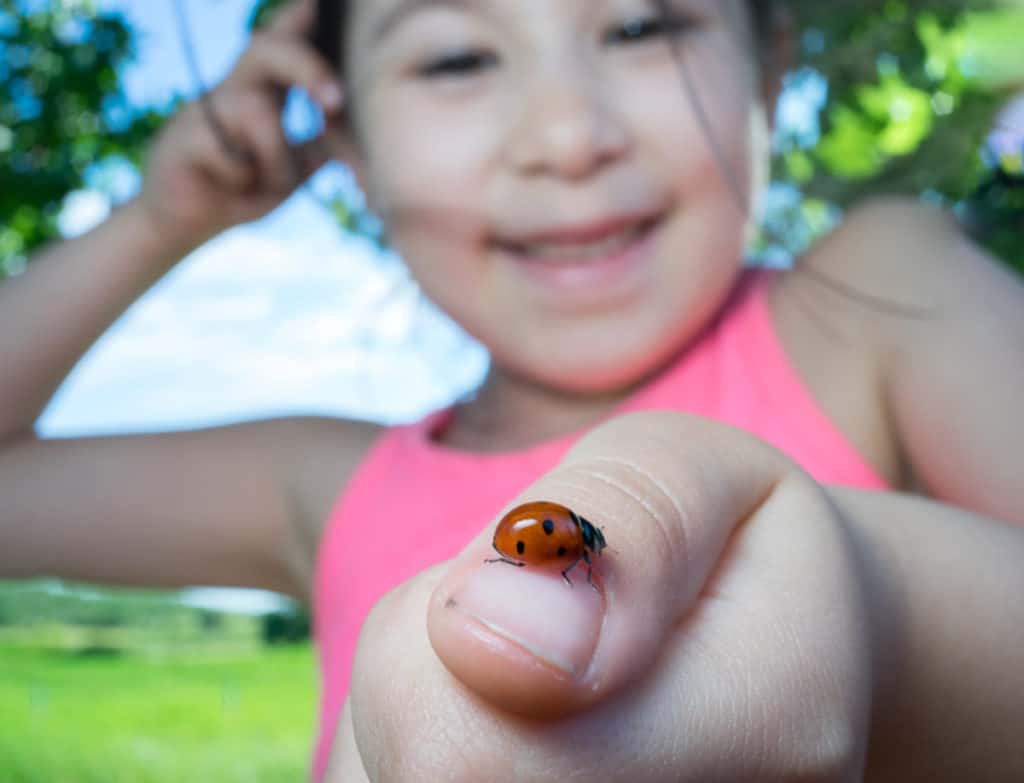
According to the Allergy and Asthma Proceedings journal, ladybirds do not carry known human diseases.
It is not uncommon to get bitten by a lady beetle, however, this bite is unlikely to spread disease. That being said, although ladybugs are not poisonous to humans, they can be an allergen to some.
A survey taken in Miami showed that 50% of people reported that they were allergic to lady beetles.
Although this number may be the result of multiple factors in and around individuals’ houses, it does represent a high number of allergens related to this beetle.
Allergic reactions to lady beetles do not pose a high problem during summer months but drastically increases as winter approaches, as ladybugs congregate in warmer places, such as inside houses for the colder months.
Symptoms Of Ladybug Allergies
While not deadly, when an individual has a ladybug allergy, the symptoms can be anything from slightly irritating to disturbing enough to interrupt your daily activities.
Kusum Sharma, MD, of the University of Louisville School of Medicine in Kentucky, said that the most common symptoms included itchy eyes, runny nose, sneezing, and a rash upon contact.
Are Ladybugs Bite Poisonous?
Lady beetles tend to avoid biting humans, while this is not an uncommon occurrence.
Because ladybugs feed on soft body insects such as aphids, they do not have teeth, however, as with other beetles and insects, they do possess a pair of mandibles.
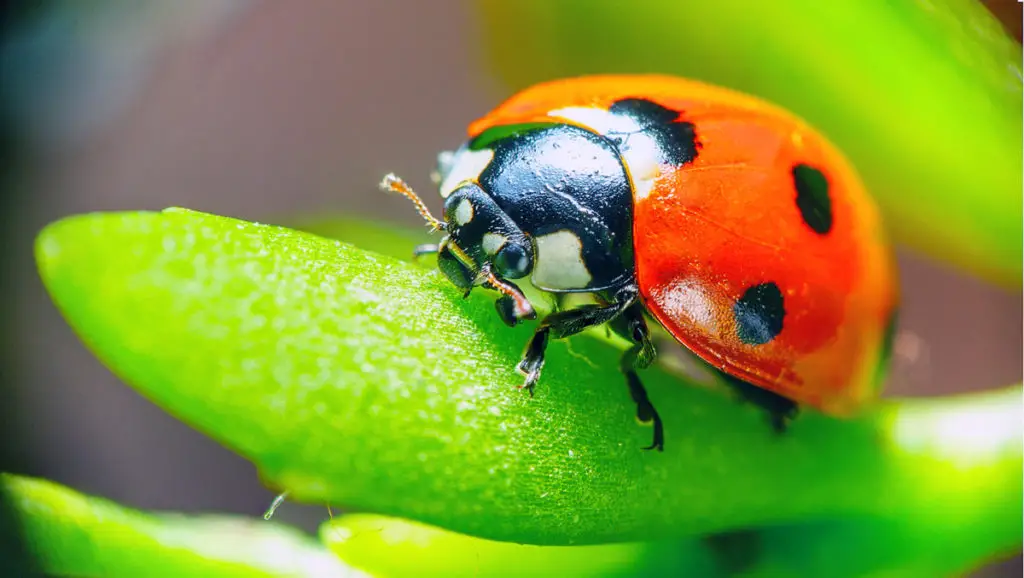
Being without teeth, a ladybug’s “bite” would feel more like a pinch. There are no venom glands in these parts and therefore the bite from a lady beetle is not poisonous.
One thing that should be noted is that the most aggressive species is the orange Asian Lady Beetle which is also the most likely to contain allergens to humans.
We have an entire article about the ladybug’s bite where we take a detailed look into how and when this might happen. If you are interested the article is called, Do Ladybugs Bite? They’re So Cute, Surely Not!
Are Ladybugs Poisonous To Eat?
As the toxicity level of lady beetles is low to humans, ingesting them is not a health risk, unless a large number of them are consumed by a person with an extremely weak immune system.
Are Ladybugs A Risk To Infants?
Ladybugs do not pose a direct risk to most babies. However, should the infant have an allergic reaction to the beetle, medical care may be needed.
Ladybugs have a foul taste, and therefore it is not likely that a young child will eat more than one.
The main risk to children from ladybugs can occur during winter when the beetles are congregated inside houses.
Are Ladybugs Poisonous To Pets?
If you are worried about the safety of your furry household buddy-rest assure this will not happen.
Ingesting a ladybug or two will not affect your cats and dogs. However, in the case that they eat a large number of them, or there has been insecticide sprayed on the beetle, some adverse effects may occur.
Reports stated by the American Kennel Club show that in some cases the reflex blood secreted by the cutesy beetles can cause damage similar to a chemical burn when crushed inside a dog’s mouth.
It is also reported that these chemicals can have a burning effect on the gastrointestinal tract.
Although for this to occur, the dog will need to have eaten a large number of the beatles, which is unlikely due to their foul taste.
Some symptoms of your pet having lady beetle related problems could include:
- Behavioral changes
- Drooling
- Drowsiness
- Not pooping
- Vomiting
So should you worry about your pet’s safety when it comes to ladybugs?
The quick answer to that is no. It is very unlikely that a pet will eat enough ladybugs to have a negative effect on their health. However, if it is a common practice to spray your garden with poisonous chemicals then the risks massively increase.
What Animals Are Affected By Ladybug Toxins?
Lady beetles can be toxic to some smaller animals such as certain bird and lizard species. However, their bright colors are a warning to these animals and are therefore spared by these predators.
Some predators, such as swifts and swallows are immune to the reflex blood toxins and therefore are not negatively affected. The same is for toads and some wasps and flies.
Do Ladybugs Color Reflect Their Toxicity?
The color of a ladybug differs not only between species, but their diet, and the region in which they are found.
In one study, the research found that brighter colored ladybugs of the same species consisted of higher toxicity levels.
These color changes were also found to be “honest” signals and not mimicked as a fake defense.
What was more interesting about the results of these experiments, is that the color of the beetles did not only represent their toxicity levels but was noticed by other animals.
Birds and other predators could register this, and therefore avoided feeding on the brighter beetles.
Which Ladybugs Are The Most Poisonous?
A study published in Scientific Reports looked at the signal honesty and predation risk among a closely related group of aposematic species.
This study concluded the different toxicity levels among different color lady beetles and found relations in the following:
Brown Ladybugs: Lady beetles with a brown color (usually larch ladybugs) rely mostly on camouflage as a protection method. These ladybugs were found to be the least toxic species.
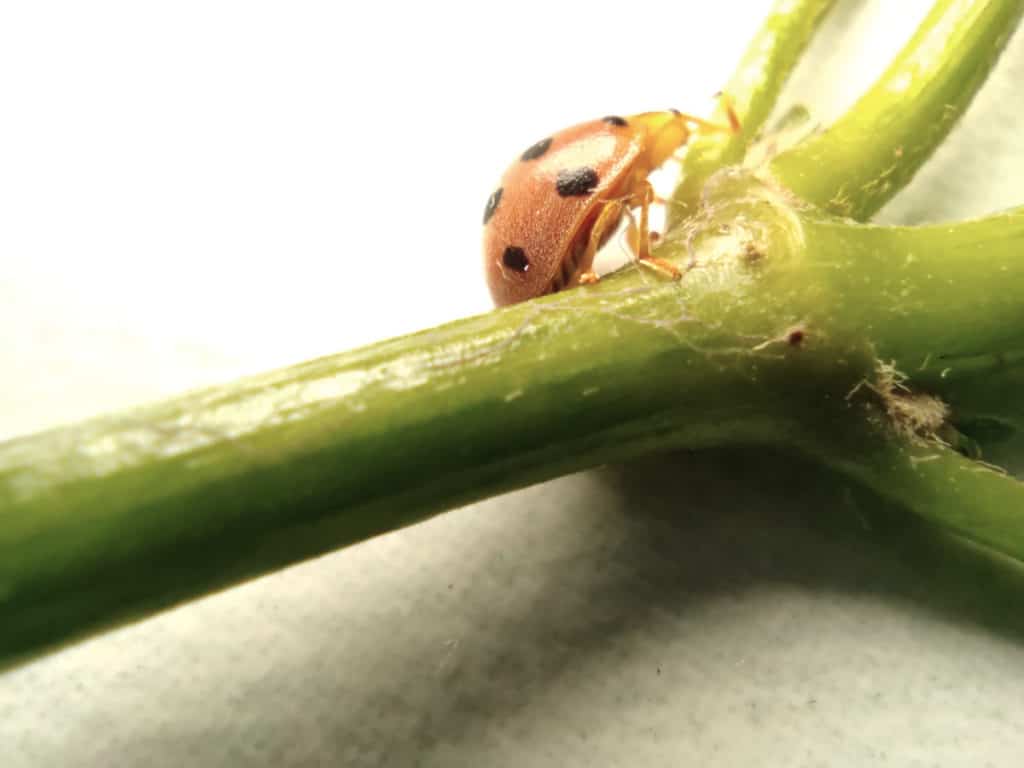
Yellow Ladybugs: The 14-spot ladybug, which is colored yellow with black spots was found to be the second least toxic species.
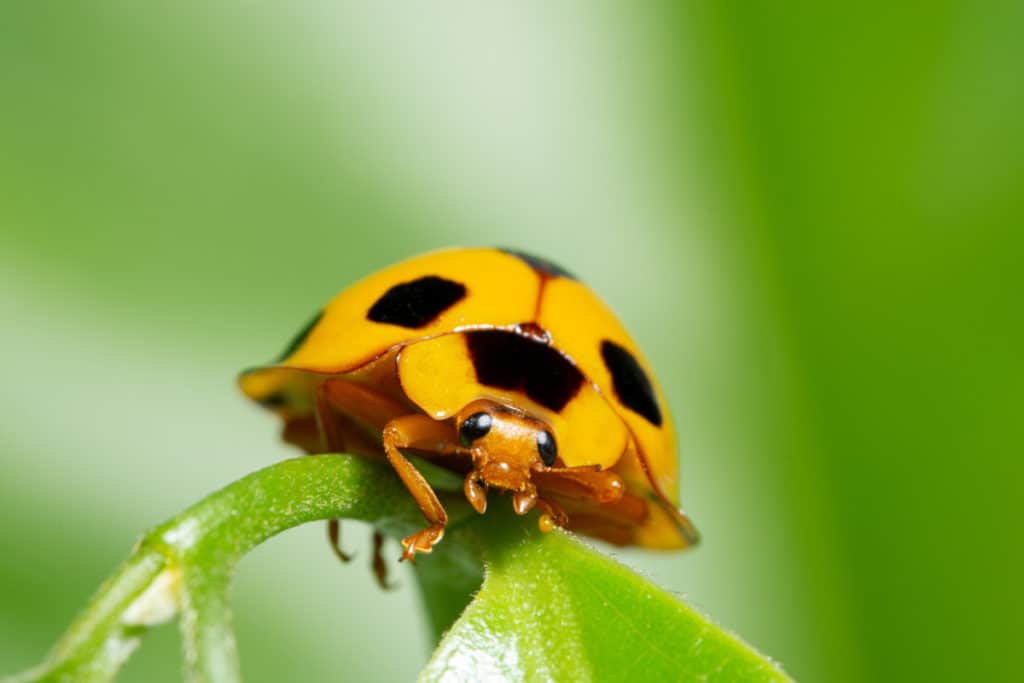
Black Ladybugs: Although not entirely black, pine ladybugs (black with bright red spots) were found to be more toxic than both the yellow and brown species.
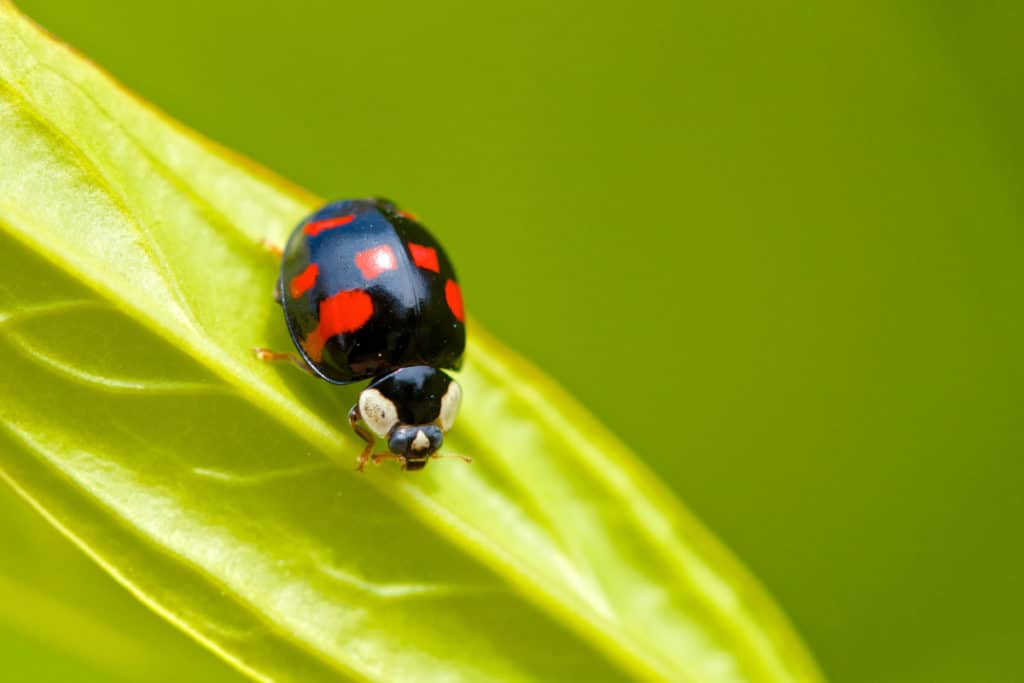
Red Ladybugs: The red ladybugs represent the toxicity of the 2-spotted lady beetle.
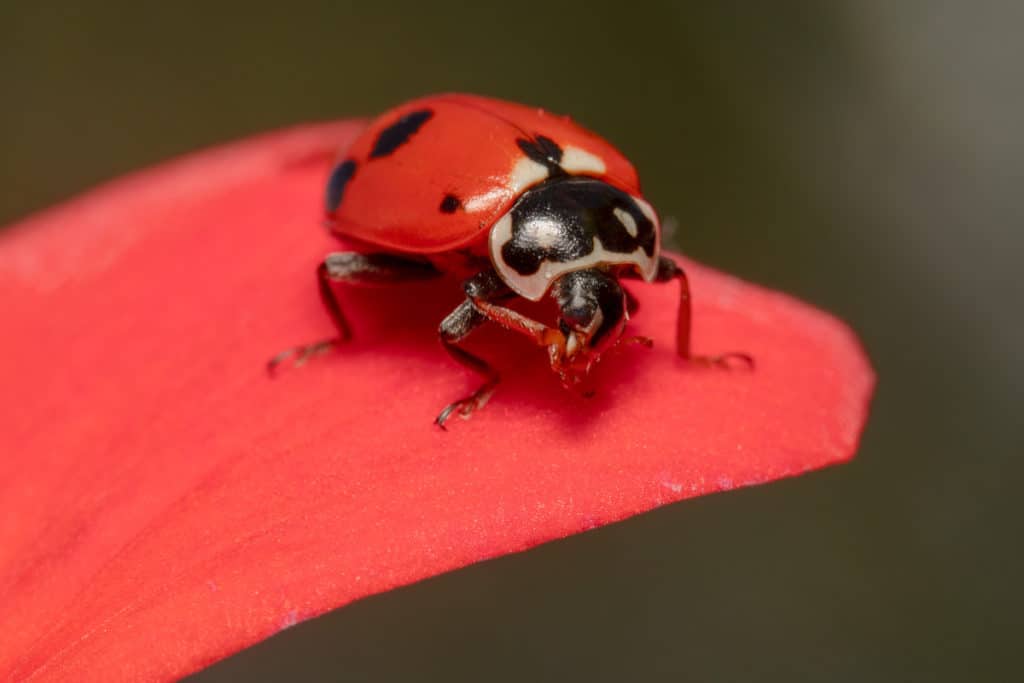
Both the typica (red with black spots) and the melanic (black with red spots) were found to be more toxic than the previous colors, although indistinguishable between each other and less toxic than orange ladybugs.
Orange Ladybugs: Orange lady beetles were found to have the highest toxicity level. These orange lady beetles represented the Asian Ladybug, which also poses the highest allergen risk to humans and pets.
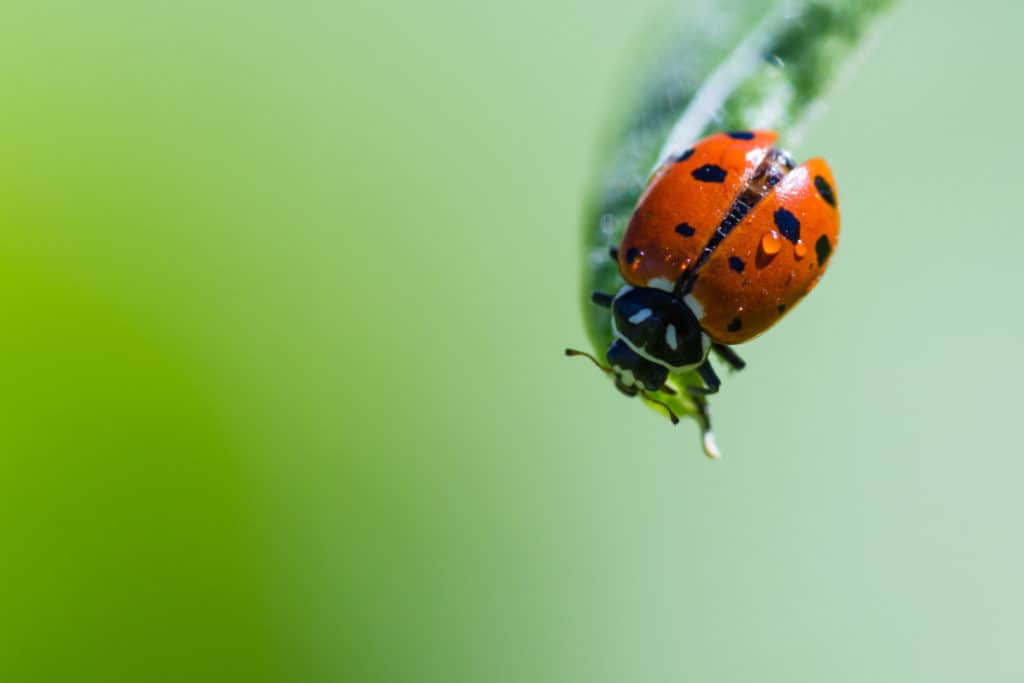
The Wrap Up
Lady beetles, although poisonous to some animals such as birds and lizards, do not pose an immediate threat to humans and household pets.
This being said, some species, such as the Asian Lady Beetle, which is the most invasive species in the US and Europe, have the highest potential for human allergens.
This is made worse by their congregational behavior during winter where they tend to hibernate inside homes.
If you suffer from ladybug allergies it is better to take preventative actions as opposed to using harmful chemicals which could cause a higher risk towards pets and young children.
